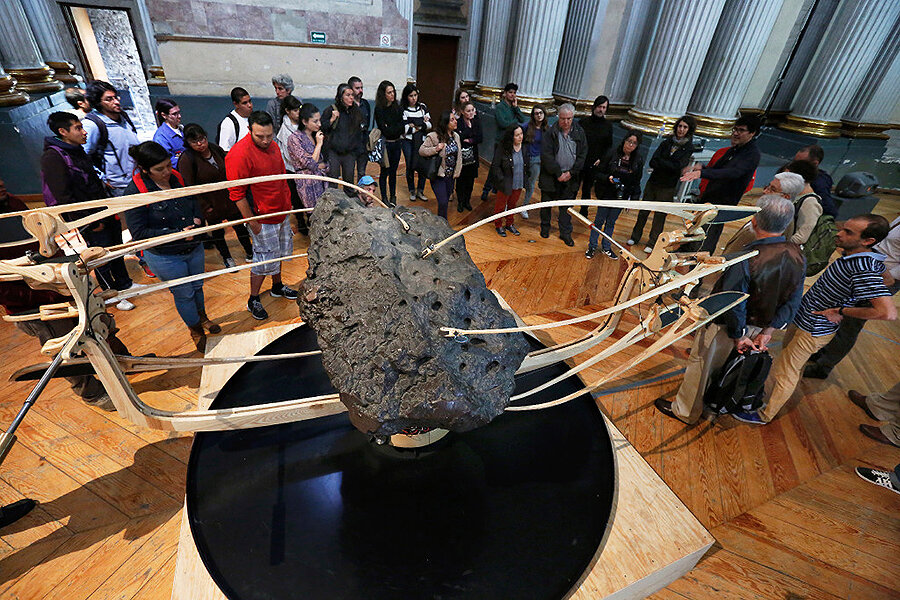How a few millimeters of Russian rock helped unwind a meteorite mystery
Loading...
Are the meteorites of today just like the ones that used to strike our planet hundreds of millions of years ago?
The answer to that question is of interest not just for its own sake, but for the insights it can provide into the evolution of our solar system’s asteroid belt, as well as the interaction of other celestial bodies in general.
And, according to some fresh research published in the journal Nature Astronomy, the answer is a resounding "no."
"We found that the meteorite flux, the variety of meteorites falling to Earth, was very, very different from what we see today," lead author Philipp Heck, an associate curator at The Field Museum in Chicago, said in a press release.
The key to understanding how that change came to pass lies in a cataclysmic collision that took place 466 million years ago, when something struck an asteroid, tore it apart, and sent chunks of rock hurtling through space. Ever since, the majority of meteorites – flying bits of debris ripped off asteroids, comets, moons, or planets when they collide – peppering Earth’s surface have originated from that one event.
In seeking to study meteorites originating even earlier, Dr. Heck’s colleagues traveled to a Russian river valley, where an ancient seafloor lies exposed. There, they were able to source micrometeorites, hunks of space rock measuring no more than 2 millimeters in diameter, from the time in question.
Extracting the samples and dissolving them in acid left one thing: microscopic chromite crystals.
"Chrome-spinels, crystals that contain the mineral chromite, remain unchanged even after hundreds of millions of years," Heck explained. "Since they were unaltered by time, we could use these spinels to see what the original parent body that produced the micrometeorites was made of."
Examining those spinels, scientists discovered the striking differences between the meteorites of today and those of times gone by. They found that prior to the big collision, 34 percent of meteorites were of a kind called primitive achondrites; today, that figure stands at 0.45 percent.
Heck says that studying the meteorite record just from the past few hundred million years since that one explosive collision is like looking outside during a snowstorm and concluding that the weather on Earth is always snowy: The debris from that one event is likely to have masked the bigger picture.
"Ultimately, we want to study more windows in time," said Heck, "not just the area before and after this collision during the Ordovician period, to deepen our knowledge of how different bodies in [the] solar system formed and interact with each other."








